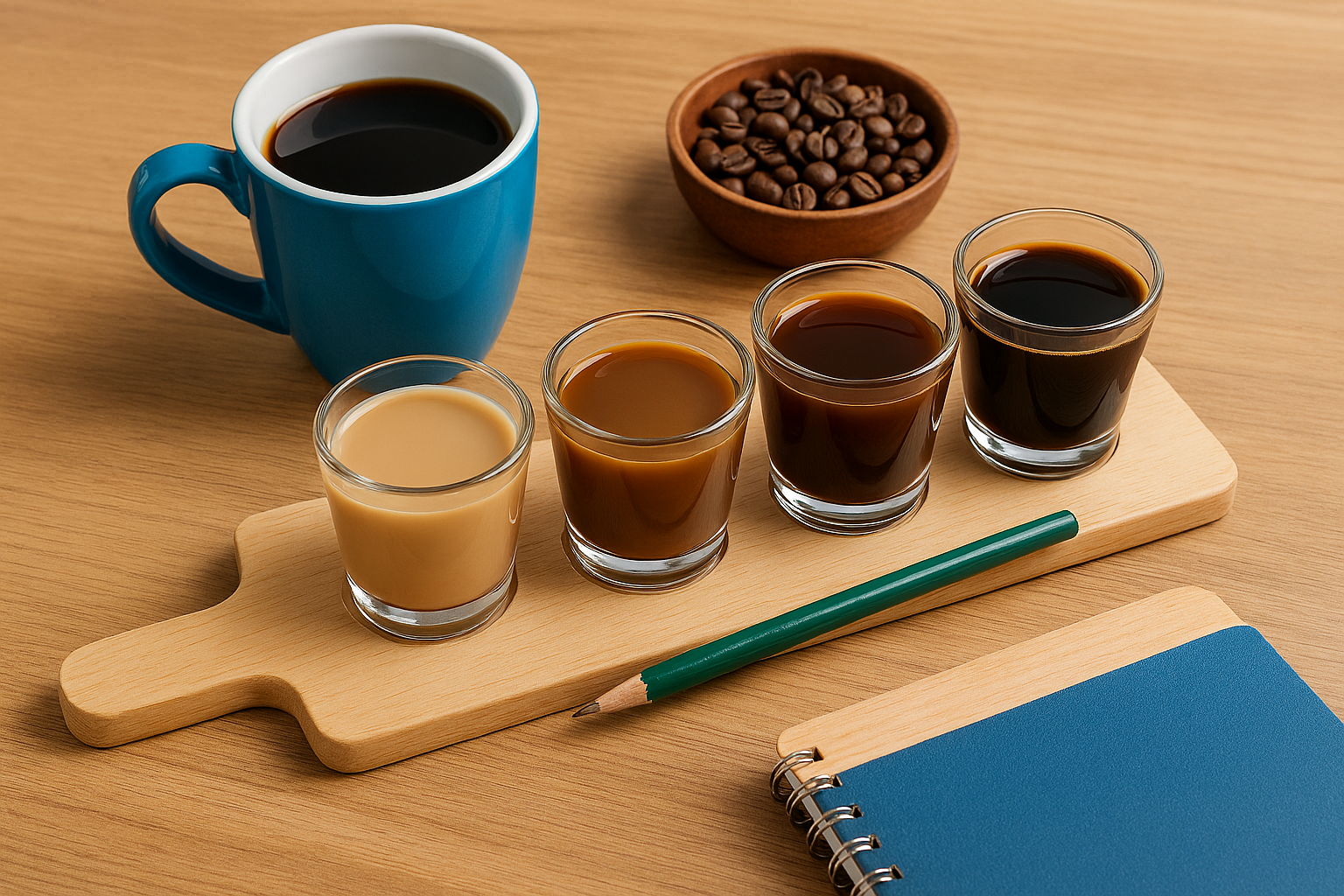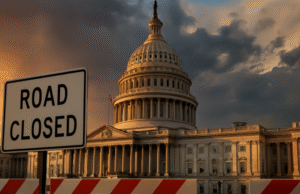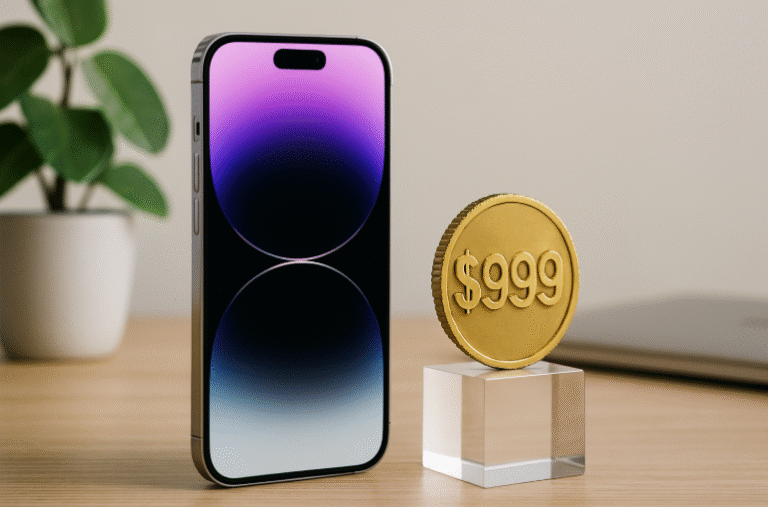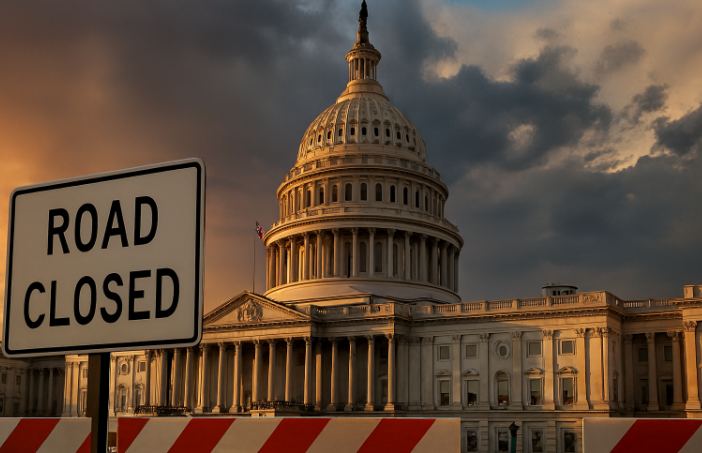
Coffee flights have revolutionized how Americans discover and appreciate specialty coffee, transforming a simple cup of joe into an educational journey through flavor, origin, and brewing artistry. These curated tasting experiences offer multiple small portions of different coffees, allowing enthusiasts and beginners alike to explore the nuanced world of specialty coffee without the commitment of a full cup.
Much like wine flights that introduced sophisticated palates to varietal differences, coffee flights have emerged as the perfect gateway for understanding why single-origin Ethiopian beans taste dramatically different from Colombian varieties, or how brewing method alone can transform the same coffee into entirely different flavor experiences.
In this comprehensive guide, you’ll discover everything from the cultural origins of coffee flights to step-by-step tasting techniques, regional variations across America, and expert tips for creating memorable coffee flight experiences at home. Whether you’re a curious coffee newcomer or a seasoned enthusiast looking to deepen your appreciation, this guide will transform how you approach specialty coffee.
The Origins of Coffee Flights
The concept of coffee flights draws direct inspiration from wine and beer tasting flights, which have long been staples of sophisticated beverage culture. Wine enthusiasts pioneered the practice of serving small portions of different varieties to highlight terroir, vintage variations, and winemaking techniques—principles that translate beautifully to coffee’s complex flavor profiles.
Specialty coffee shops began experimenting with flight formats during the early 2000s as third-wave coffee culture gained momentum across the United States. Pioneer establishments like Intelligentsia Coffee in Chicago and Blue Bottle Coffee in California recognized that customers craved deeper understanding of their craft, not just caffeination.
The growth of third-wave coffee culture created perfect conditions for coffee flights to flourish. Unlike traditional coffee shops focused solely on convenience and caffeine delivery, third-wave establishments treat coffee as artisanal craft—emphasizing origin, processing methods, roasting techniques, and brewing precision. This elevated approach naturally led to tasting experiences that could showcase these subtle differences side by side.
Early adopters discovered that coffee flights solved a common problem: how do you help customers understand why a $15 bag of single-origin coffee costs more than grocery store blends? By presenting multiple coffees simultaneously, cafés could demonstrate the remarkable diversity within specialty coffee, justifying premium pricing while educating consumers about quality distinctions.
What Is a Coffee Flight?
A coffee flight consists of multiple small portions of different coffees served simultaneously, typically ranging from three to six samples presented on a wooden board, metal tray, or specialized flight serving set. Each portion contains approximately 2-4 ounces of coffee—enough to evaluate flavor characteristics without overwhelming the palate or providing excessive caffeine.
The presentation style varies significantly across different establishments. Some cafés serve flights in small glasses reminiscent of wine tastings, while others use diminutive ceramic cups that maintain proper temperature. Premium establishments often include detailed tasting cards describing each coffee’s origin, processing method, flavor notes, and optimal brewing parameters.
Common elements across most coffee flights include clearly labeled samples arranged from lightest to darkest roast or mildest to strongest flavor intensity. Many flights incorporate palate cleansers like sparkling water or plain crackers between tastings, borrowed directly from wine tasting traditions. Progressive establishments provide cupping spoons for proper tasting technique and encourage customers to engage with the coffee’s aroma before tasting.
The most sophisticated coffee flights include pairing options—complementary foods that enhance or contrast with specific coffee characteristics. These might include dark chocolate to highlight fruity notes in Ethiopian coffees, or buttery pastries that balance bright acidity in Central American varieties.
Types of Coffee Flights
By Brewing Method
Espresso flights showcase how different beans perform under high-pressure extraction, often featuring single-origin varieties alongside house blends and seasonal roasts. These flights typically present espresso shots ranging from bright, acidic profiles to rich, chocolatey expressions, demonstrating how origin and roast level dramatically impact espresso characteristics.
Pour-over flights highlight how brewing method affects flavor extraction, commonly featuring the same coffee prepared using Chemex, V60, and Kalita Wave methods. This approach teaches customers how grind size, water temperature, and filtration style influence final cup characteristics—valuable education for home brewing enthusiasts.
Cold brew and nitro flights have gained tremendous popularity, especially during warmer months. These flights might contrast traditional cold brew with nitro-infused versions, flash-chilled pour-overs, or Japanese-style iced coffee preparations. The temperature and brewing time variations create distinctly different flavor profiles from identical green coffee.
Specialty brewing flights feature unique preparation methods like Aeropress, siphon brewing, or Turkish coffee, often appealing to customers curious about alternative brewing techniques. These flights serve both educational and entertainment purposes, showcasing the brewing equipment as much as the coffee itself.
By Flavor Profile
Roast-focused flights present the same origin coffee at light, medium, and dark roast levels, dramatically illustrating how roasting transforms green coffee’s inherent characteristics. Light roasts preserve origin-specific flavors like floral Ethiopian notes, while darker roasts develop caramelization and roast-derived flavors that can either complement or overshadow origin characteristics.
Flavor note flights organize coffees by dominant taste characteristics—fruity profiles featuring berry-forward Ethiopian and Kenyan coffees, nutty flights highlighting Brazilian and Guatemalan varieties, or chocolate-focused selections emphasizing rich, full-bodied coffees from regions like Sumatra and Papua New Guinea.
Acidity-focused flights demonstrate how different processing methods and origins create varying levels of brightness and tartness, from wine-like acidity in washed African coffees to mellow, low-acid profiles in Indonesian varieties. These flights particularly benefit customers who believe they dislike acidic coffee but haven’t experienced well-balanced acidity in specialty varieties.
By Origin
Single-origin flights explore regional coffee characteristics, often featuring multiple farms or cooperatives from the same country. Ethiopian flights might showcase washed Yirgacheffe alongside natural process Sidamo and experimental anaerobic fermentation lots, demonstrating incredible diversity within a single origin.
Regional comparison flights pit different coffee-producing areas against each other—Latin American brightness versus African complexity versus Asian earthiness. These educational flights help customers understand how climate, soil, and processing traditions create distinctive regional profiles.
Micro-lot flights represent the pinnacle of specialty coffee education, featuring extremely limited quantities from specific farms or even individual plots within farms. These ultra-premium flights often include detailed stories about farmers, processing innovations, and exceptional growing conditions that produced unique flavor profiles.
By Experience
Seasonal flights celebrate harvest timing and processing innovations, featuring newly arrived crops during peak freshness periods. Spring flights might highlight Central American harvest arrivals, while fall presentations feature fresh African crops. These timely offerings connect customers to global coffee seasons and optimal consumption windows.
Signature café flights reflect individual establishment’s personality and expertise, often featuring house-roasted coffees or exclusive relationships with specific farms. These flights serve as coffee shop signatures, distinguishing establishments from competitors while showcasing roasting philosophy and sourcing relationships.
Pairing flights combine coffee with complementary foods, creating synergistic flavor experiences that enhance both elements. Coffee and chocolate pairings demonstrate how cacao percentages interact with coffee’s inherent sweetness, while cheese pairings explore unexpected flavor bridges between seemingly disparate products.
How Coffee Flights Work
Coffee flights follow established serving protocols designed to optimize tasting experiences and minimize palate fatigue. Portion sizes typically range from 2-4 ounces per sample, providing sufficient volume for proper evaluation without overwhelming caffeine consumption or palate exhaustion.
Serving order generally progresses from lightest to darkest roasts or mildest to strongest flavors, preventing bold profiles from overwhelming subtle characteristics in delicate coffees. Professional cupping protocols suggest starting with dry fragrance evaluation before adding water, though casual coffee flights often skip this step for accessibility.
Palate cleansing between samples follows wine tasting traditions, utilizing neutral-tasting elements like plain water, unsalted crackers, or even fresh apple slices to reset taste buds. Some establishments provide specific palate cleansers chosen to complement their coffee selections—sparkling water to cut through oily dark roasts or mild cheeses to enhance fruity light roasts.
Tasting cards accompanying flights typically include origin information, processing methods, roast levels, and suggested flavor notes. Advanced establishments provide cupping score sheets or simplified tasting wheels, encouraging customers to develop personal vocabulary for describing coffee characteristics. These educational tools transform passive consumption into active learning experiences.
Professional coffee flights often incorporate formal cupping techniques—slurping to aerate coffee across the entire palate, evaluating aroma intensity, and considering aftertaste duration. However, most commercial flights prioritize accessibility over strict technical protocols, welcoming customers to engage at their comfort level.
Why Coffee Flights Are Popular
Coffee flights satisfy multiple consumer desires simultaneously: education, discovery, and social experience. Unlike traditional coffee service focused purely on caffeination, flights transform coffee consumption into interactive learning experiences that justify premium pricing while building customer loyalty.
The discovery aspect particularly appeals to adventurous coffee drinkers who want to explore beyond familiar comfort zones without risking disappointment from full-sized unfamiliar coffees. Flights provide risk-free exploration—if one sample doesn’t appeal, several others await discovery.
Social media has amplified coffee flight popularity, with beautifully presented flights generating countless Instagram posts and social sharing. The visual appeal of multiple coffees arranged aesthetically creates inherently shareable content that extends marketing reach far beyond initial customers.
For specialty coffee shops, flights serve crucial educational functions that justify premium pricing and build sophisticated customer bases. When customers understand differences between $12 and $25 coffee bags through side-by-side comparison, they’re more likely to invest in higher-quality options for home brewing.
Coffee flights also appeal to experience-driven consumers who prioritize memorable activities over simple transactions. Much like wine country tastings or craft brewery tours, coffee flights create lasting memories associated with specific establishments, encouraging repeat visits and word-of-mouth recommendations.
The Art of Tasting a Coffee Flight
Steps to Proper Coffee Tasting
Proper coffee flight tasting begins with visual observation, noting color variations that indicate roast levels and brewing methods. Darker coffees typically display deeper brown tones with potential oil visibility, while lighter roasts maintain brighter, more amber appearances that suggest preserved origin characteristics.
Aroma evaluation follows visual assessment, involving gentle swirling to release volatile compounds and deep inhalation to identify fragrance notes. Professional cuppers distinguish between “fragrance” (dry coffee aroma) and “aroma” (brewed coffee scent), though casual tasters can simply focus on initial scent impressions before tasting.
The first sip should be small and deliberate, allowing coffee to coat the entire palate while paying attention to immediate flavor impressions. Professional cupping involves audible slurping to aerate coffee and distribute it across taste buds, though casual tasting doesn’t require such dramatic technique.
Flavor identification progresses from broad categories (fruity, nutty, chocolatey) to specific descriptors (red berry, hazelnut, dark chocolate). Developing personal vocabulary takes time and practice, but comparing multiple coffees simultaneously accelerates flavor recognition skills.
Mouthfeel assessment considers coffee’s weight and texture—light-bodied coffees feel thin and tea-like, while full-bodied varieties coat the mouth with substantial presence. Acidity evaluation determines brightness levels, from wine-like tartness to mellow smoothness.
Finish evaluation focuses on aftertaste duration and evolution, noting how flavors develop and fade after swallowing. Premium coffees often display complex finish characteristics that continue evolving minutes after consumption.
Tools for Better Tasting
The coffee flavor wheel, developed by the Specialty Coffee Association, provides standardized vocabulary for describing coffee characteristics. This visual tool organizes flavors from broad categories in the center to specific descriptors around the perimeter, helping tasters develop consistent terminology for complex flavor experiences.
Scoring sheets borrowed from professional cupping protocols help systematic evaluation by providing structured frameworks for assessing aroma, flavor, acidity, body, and overall impression. These tools transform subjective experiences into more objective assessments that can be compared across different coffees and tasting sessions.
Professional cupping technique involves specific protocols for optimal flavor extraction and evaluation. While casual coffee flights don’t require strict adherence to these methods, understanding proper technique enhances tasting accuracy and enjoyment.
Casual tasting approaches prioritize accessibility and enjoyment over technical precision, encouraging personal preference exploration without intimidating newcomers with complex protocols. The goal remains discovering personal taste preferences rather than achieving professional cupping scores.
Coffee Flights in Different Regions
United States
American coffee flight culture reflects broader third-wave coffee movements concentrated in urban areas with sophisticated food scenes. West Coast cities like Seattle, Portland, and San Francisco pioneered specialty coffee flights, leveraging proximity to coffee roasting innovation and customer bases willing to pay premium prices for educational experiences.
East Coast adoption followed different patterns, with New York City’s competitive café environment driving creative flight presentations and Instagram-worthy visual appeal. Cities like Boston and Philadelphia embraced coffee flights as extensions of their strong food and beverage cultures.
Southern coffee culture initially resisted specialty coffee trends, but cities like Austin, Nashville, and Atlanta now feature thriving coffee flight scenes that blend traditional hospitality with modern coffee education. These regions often incorporate local Southern flavors and hospitality traditions into their flight presentations.
Midwest adoption varies significantly by city, with Chicago leading specialty coffee innovation while smaller markets slowly embrace coffee flights as broader specialty coffee awareness grows. The region’s practical approach often emphasizes value and education over purely aesthetic presentations.
International Influence
European coffee culture, with its centuries-old café traditions, initially viewed American coffee flights with skepticism. However, progressive establishments in coffee-forward cities like Vienna, Amsterdam, and Stockholm now offer sophisticated flight experiences that blend traditional European café culture with modern specialty coffee education.
Asian markets, particularly Japan, South Korea, and Taiwan, have embraced coffee flights with characteristic attention to detail and presentation aesthetics. Japanese coffee flights often incorporate meticulous presentation standards and seasonal ingredients that reflect broader cultural values around craftsmanship and seasonality.
Australian coffee culture, already sophisticated through strong café traditions, adapted coffee flights to complement existing flat white and espresso expertise. Australian flights often emphasize brewing technique education and local roaster showcases.
Coffee Flights at Home
Creating coffee flights at home requires careful planning but offers tremendous value for coffee enthusiasts wanting to explore specialty varieties without café visit expenses. Successful home flights start with thoughtful coffee selection—choosing varieties that highlight specific contrasts like roast level, origin, or processing method.
Bean selection strategies depend on flight objectives. Roast comparison flights require purchasing the same origin at different roast levels, while origin flights need coffees from distinctly different regions prepared identically. Processing flights might compare washed, natural, and honey-processed coffees from the same farm.
Equipment requirements remain minimal—any brewing method capable of consistent preparation works effectively. Pour-over setups like V60 or Chemex offer excellent control, while French press provides foolproof consistency for beginners. The key lies in maintaining identical brewing parameters across all samples except the variable being tested.
Serving preparation mirrors professional presentations with appropriate small cups, serving boards, and palate cleansers. Simple note-taking materials help track impressions and preferences, particularly when exploring multiple coffees across several tasting sessions.
Hosting coffee tasting parties transforms individual education into social experiences that build community around specialty coffee appreciation. Successful parties require advance planning, clear instructions for guests, and structured tasting progressions that prevent palate fatigue while maintaining engagement.
Educational approaches for home flights benefit from structured comparison frameworks and basic cupping vocabulary. Providing simple tasting sheets or flavor wheels helps participants develop personal coffee vocabulary while ensuring memorable learning experiences.
Consider incorporating educational elements that connect coffee consumption to broader agricultural and cultural contexts. A unique learning system approach can transform simple tastings into comprehensive educational experiences that build lasting appreciation for specialty coffee craftsmanship and global coffee culture.
Coffee Flight Trends in 2025 and Beyond
The specialty coffee industry continues evolving rapidly, with several emerging trends shaping coffee flight experiences across America. Micro-roaster partnerships have become increasingly important, with cafés featuring exclusive relationships with specific farms or processing facilities to offer unique coffees unavailable elsewhere.
Coffee and alcohol fusion represents a growing trend, with establishments offering flights that combine traditional coffee service with coffee-based cocktails, espresso martinis, or coffee-infused spirits. These hybrid experiences appeal to customers seeking sophisticated afternoon or evening beverage options that bridge coffee and cocktail cultures.
Sustainability storytelling has become integral to modern coffee flights, with detailed information about farmer relationships, environmental impact, and social responsibility initiatives. Customers increasingly value transparency about coffee sourcing and its impact on producing communities, making ethical considerations part of the tasting experience.
Technology integration includes QR codes linking to detailed coffee information, farmer videos, and even blockchain traceability systems that track coffee from farm to cup. These digital enhancements provide unprecedented transparency and education opportunities without overwhelming traditional tasting experiences.
Tourism integration has expanded beyond traditional coffee shop settings, with specialty coffee flights appearing in hotels, restaurants, and even coffee farm tours. These experiential offerings target travelers seeking authentic local experiences and cultural education through coffee appreciation.
Seasonal and limited edition flights capitalize on harvest timing and processing innovations, creating urgency and exclusivity that drives customer engagement. These time-sensitive offerings often feature experimental processing methods or rare varietals that justify premium pricing through scarcity and innovation.
Educational programs integrated with coffee flights serve broader community education goals, similar to youth education series programs that build long-term appreciation for craftsmanship and cultural traditions. These initiatives often partner with schools, community centers, or cultural organizations to expand coffee education beyond traditional commercial settings.
Benefits and Challenges of Coffee Flights
Benefits
Coffee flights provide unparalleled educational value by demonstrating subtle differences that might be imperceptible when tasting coffees individually. Side-by-side comparison amplifies distinction between origins, roast levels, and brewing methods, accelerating learning curves that might otherwise require months of individual coffee exploration.
Supporting local roasters and specialty coffee shops through flight purchases directly contributes to community business development and artisanal craft preservation. Many flight offerings feature locally roasted coffees or exclusive partnerships that strengthen regional coffee scenes and provide economic support to small businesses.
Customer engagement benefits extend far beyond simple beverage service, creating memorable experiences that encourage social sharing, repeat visits, and word-of-mouth marketing. The interactive nature of coffee flights transforms passive consumption into active participation that builds stronger relationships between customers and coffee establishments.
Professional development opportunities emerge for coffee industry professionals who use flights to develop palate sensitivity, expand flavor vocabulary, and understand market preferences. These skills translate directly into improved purchasing decisions, roasting techniques, and customer education abilities.
Challenges
Cost considerations present the most significant barrier to coffee flight adoption, both for establishments offering flights and customers purchasing them. Premium specialty coffees required for meaningful flights often cost significantly more than standard offerings, potentially limiting accessibility to affluent customer segments.
Quality consistency challenges emerge when establishments attempt to maintain multiple specialty coffees simultaneously, particularly regarding freshness, proper storage, and optimal brewing parameters for each variety. Poor execution can undermine educational value and customer satisfaction, potentially discouraging future specialty coffee exploration.
Customer education requirements demand significant staff training and ongoing education to provide meaningful flight guidance without overwhelming newcomers. Balancing accessibility with technical accuracy requires skilled communication and deep product knowledge that many establishments struggle to maintain consistently.
Overwhelming choice paralysis can discourage customers from exploring coffee flights when presented with too many options or overly complex technical information. Successful flights require careful curation that provides meaningful variety without creating decision-making anxiety or intimidation.
Expert Opinions and Case Studies
Leading specialty coffee roasters consistently emphasize education as the primary value proposition for coffee flights. James Freeman, founder of Blue Bottle Coffee, advocates for flights that tell stories about coffee origins and processing methods, transforming technical information into compelling narratives that connect customers emotionally to their coffee choices.
Independent café owners report that coffee flights generate higher profit margins than traditional coffee service while building customer loyalty through educational experiences. Sarah Jones of Portland’s Stumptown Coffee notes that flight customers typically purchase more retail coffee beans and return more frequently than standard beverage customers.
Customer feedback consistently highlights discovery and learning as primary motivations for choosing coffee flights over traditional menu items. Survey data from specialty coffee establishments indicates that 78% of flight customers report trying new coffee varieties at home after positive flight experiences.
Successful coffee flight programs often incorporate regular menu rotation to encourage repeat visits and seasonal adaptation to highlight harvest timing and processing innovations. Case studies from established programs show that variety and freshness significantly impact customer satisfaction and program sustainability.
Industry professionals recommend starting with simple three-coffee flights focusing on single variables like roast level or origin, gradually expanding complexity as customer education and staff expertise develop. This progressive approach prevents overwhelming newcomers while building foundation knowledge for more sophisticated offerings.
Regional success stories demonstrate adaptation to local preferences and cultural contexts. Southern establishments often emphasize hospitality and storytelling, West Coast programs focus on innovation and sustainability, while Northeast flights emphasize craftsmanship and technical precision.
Frequently Asked Questions
What is included in a coffee flight?
A coffee flight typically includes 3-6 small portions (2-4 ounces each) of different coffees served simultaneously on a tray or board, often accompanied by tasting notes, palate cleansers like water or crackers, and sometimes complementary foods. The specific coffees vary by establishment but usually showcase different origins, roast levels, or brewing methods to highlight distinct characteristics.
How many cups are in a coffee flight?
Most coffee flights contain 3-4 cups, though some establishments offer larger flights with 5-6 samples or smaller flights with just 2 coffees. The optimal number balances variety with palate fatigue prevention—too many samples can overwhelm taste buds, while too few limit educational value and discovery potential.
Are coffee flights the same as coffee tastings?
Coffee flights and coffee tastings share similarities but differ in formality and structure. Coffee flights are typically casual café experiences designed for general customers, while coffee tastings often follow formal cupping protocols used by professionals. Both serve educational purposes, but flights prioritize accessibility and enjoyment over technical evaluation.
What types of coffee are best for flights?
The best coffee flight selections highlight meaningful differences between samples. Single-origin coffees work excellently for origin comparison flights, while the same coffee at different roast levels demonstrates roasting impact. Light to medium roasts typically showcase origin characteristics better than dark roasts, making them ideal for educational flights focusing on regional differences.
How do you properly taste a coffee flight?
Start by smelling each coffee’s aroma, then taste small sips while paying attention to initial flavor impressions, acidity, body, and aftertaste. Progress from lightest to darkest roasts to prevent bold flavors from overwhelming subtle characteristics. Use palate cleansers between samples and take notes to remember preferences and discoveries.
How much does a coffee flight typically cost?
Coffee flight prices range from $8-25 depending on coffee quality, location, and presentation complexity. Basic flights featuring house coffees cost less than premium flights showcasing rare micro-lots or exclusive varieties. Prices generally reflect the combined cost of individual coffees plus educational value and presentation.
Can you make coffee flights at home?
Yes, home coffee flights are achievable with careful planning and basic equipment. Purchase 3-4 different coffees highlighting specific contrasts, brew identical small portions using consistent parameters, and serve simultaneously with palate cleansers. Home flights offer cost savings and personalized education opportunities.
What’s the difference between coffee flights and coffee cupping?
Coffee cupping follows standardized professional protocols for systematic coffee evaluation, including specific grind sizes, water temperatures, and timing. Coffee flights are consumer-friendly adaptations that prioritize accessibility and enjoyment over technical precision, though both serve educational purposes and feature multiple coffee comparisons.
Conclusion
Coffee flights represent far more than trendy café offerings—they’re gateways to understanding the remarkable complexity and cultural richness embedded in every coffee bean. Through structured comparison and guided exploration, these experiences transform casual coffee drinkers into informed enthusiasts who appreciate the craftsmanship, agriculture, and cultural traditions behind specialty coffee.
The growth of coffee flight culture across America reflects broader consumer desires for authentic experiences, education, and connection to global communities. Whether exploring Ethiopian highlands through bright, floral profiles or discovering Indonesian earthiness through full-bodied varieties, coffee flights provide passport-free travel through coffee’s diverse landscape.
As specialty coffee continues evolving, coffee flights will likely expand beyond traditional café settings into hotels, restaurants, tourism experiences, and home entertainment. The educational foundation they provide builds lifelong appreciation for coffee craftsmanship while supporting sustainable farming practices and ethical sourcing initiatives worldwide.
Your coffee flight journey awaits—whether at a neighborhood specialty shop showcasing local roaster expertise or in your own kitchen exploring carefully selected varieties. Each flight offers discovery opportunities that deepen understanding and expand palates, transforming daily coffee consumption into ongoing adventure through flavor, culture, and craftsmanship. The perfect cup isn’t just waiting to be found—it’s waiting to be understood, appreciated, and shared.









